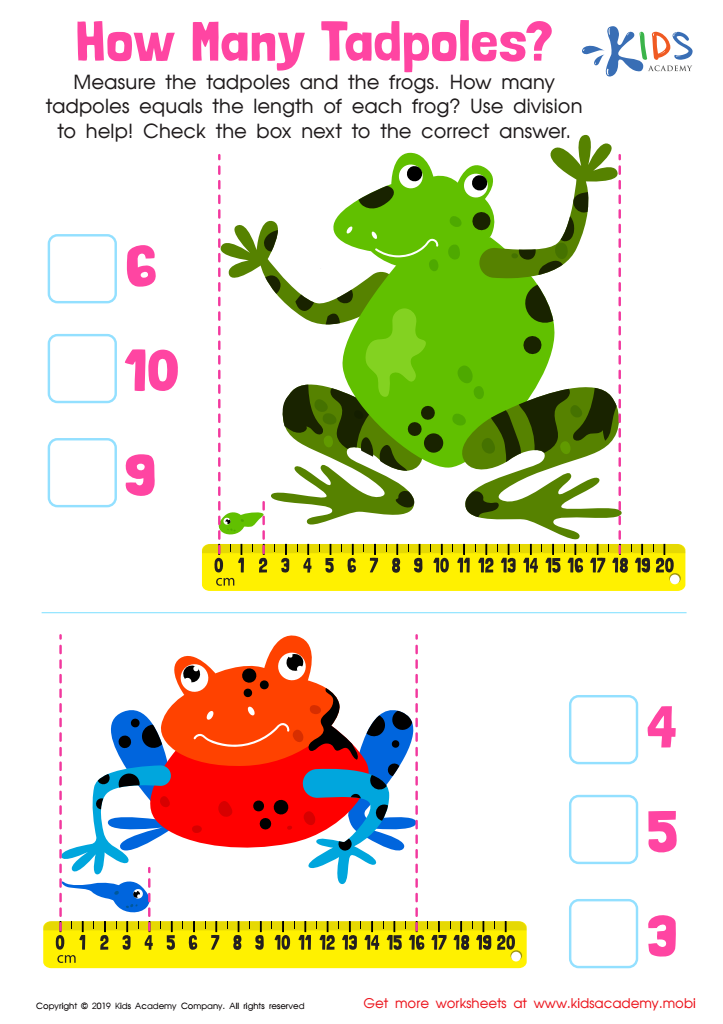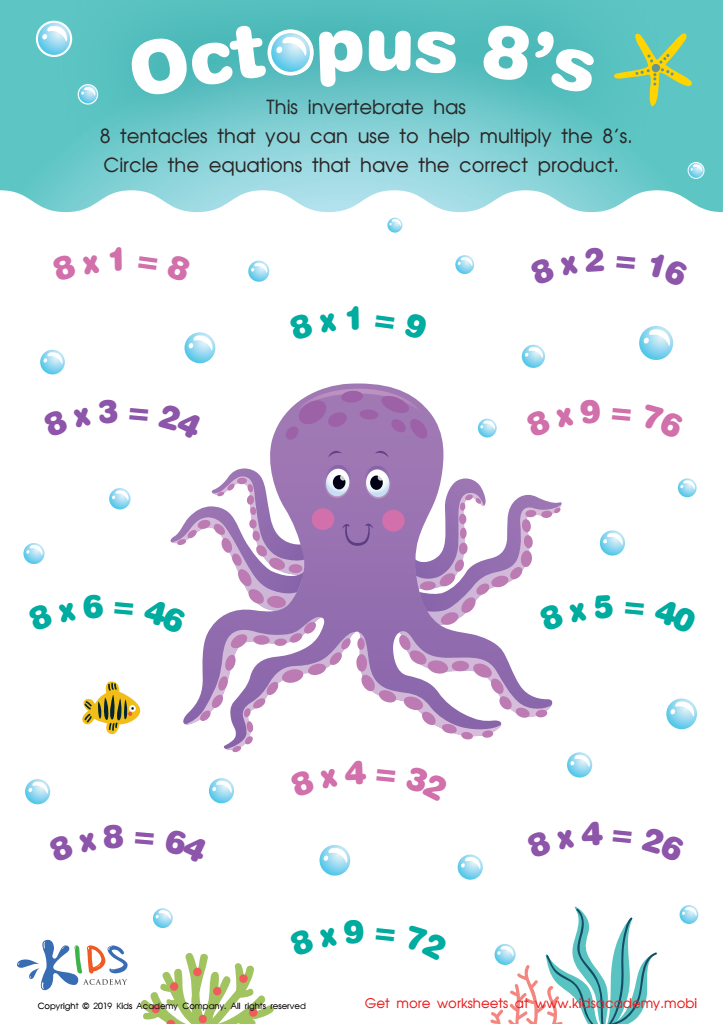Number Recognition Normal Plants and Animals Worksheets for Ages 7-9
4 filtered results
-
From - To
Boost your child's number recognition skills while exploring the wonders of nature with our Number Recognition Normal Plants and Animals Worksheets for ages 7-9. Crafted by education experts, these engaging worksheets blend the excitement of learning about diverse plants and animals with essential numerical practice. Ideal for building a strong math foundation, each worksheet offers unique, interactive activities that make learning fun and meaningful. Perfect for use at home or in the classroom, these printable resources support cognitive development and foster a love for both mathematics and the natural world. Download, print, and watch your child's skills flourish!


How Many Tadpoles Worksheet


African Wildlife: Giraffe Worksheet


Animal Features Worksheet


Octopus 8’s Worksheet
Number recognition, as well as an understanding of plants and animals, are fundamental building blocks for cognitive development in children aged 7-9. These skills serve as key indicators of a child's mathematical and scientific curiosity and competence.
Number recognition lays the groundwork for a myriad of essential life skills, including time management, budget planning, and logical reasoning. By developing number sense early on, children can engage in more complex mathematical concepts with confidence as they progress in their education. This understanding enables them to solve problems, analyze patterns, and think critically in varied situations.
Simultaneously, familiarizing children with plants and animals nurtures their natural curiosity about the world and fosters a basic understanding of life sciences. This can lead to an appreciation for nature, promoting responsible environmental behaviors. The knowledge gained from studying living organisms also underpins key scientific principles and enhances observational skills, as well as offering opportunities for interdisciplinary learning by integrating math, reading, and art.
For parents and teachers, dedicating time and resources to these educational components helps develop well-rounded, inquisitive learners. The combination of numerical aptitude and a love for living things cultivates holistic growth, preparing them for future academic endeavors and a successful, enriched life.
 Assign to My Students
Assign to My Students














